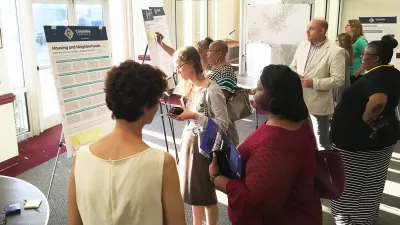What does it mean to truly involve the public in planning processes? Neeraj Mehta finds "too much placation, manipulation and tokenism in our engagement efforts," and identifies principles for collective problem-solving and shared decision-making.
The public is an incredible, and essential, asset in the successful creation, implementation, and utilization of the products of planning and development. However, Mehta finds that too often, planners neglect the value of this asset to the planning process by "wanting people to participate
without giving them the opportunity to make real decisions."
"Much of the challenge, as I see it, is based in reflection of what we
actually believe about the public and about the role and value of
engagement more broadly," says Mehta. "There is a distinct difference between
assessing people's opinions or attitudes and actually sharing planning
and decision-making responsibilities. There's a difference between real
partnerships and simply asking people to rubber-stamp decisions we've
already made...We devalue
investments in time and relationship building, which often leads to us
more easily devalue the contributions and expertise of those we engage."
She offers three fundamental principles that can guide the development of truly meaningdul community engagement strategies:
- Acknowledge our interdependence and need for increased diversity.
- Be honest with the complexity.
- Be comfortable with uncertainty and controversy.
FULL STORY: The First Steps to Meaningful Community Engagement

Planetizen Federal Action Tracker
A weekly monitor of how Trump’s orders and actions are impacting planners and planning in America.

Map: Where Senate Republicans Want to Sell Your Public Lands
For public land advocates, the Senate Republicans’ proposal to sell millions of acres of public land in the West is “the biggest fight of their careers.”

Restaurant Patios Were a Pandemic Win — Why Were They so Hard to Keep?
Social distancing requirements and changes in travel patterns prompted cities to pilot new uses for street and sidewalk space. Then it got complicated.

Platform Pilsner: Vancouver Transit Agency Releases... a Beer?
TransLink will receive a portion of every sale of the four-pack.

Toronto Weighs Cheaper Transit, Parking Hikes for Major Events
Special event rates would take effect during large festivals, sports games and concerts to ‘discourage driving, manage congestion and free up space for transit.”

Berlin to Consider Car-Free Zone Larger Than Manhattan
The area bound by the 22-mile Ringbahn would still allow 12 uses of a private automobile per year per person, and several other exemptions.
Urban Design for Planners 1: Software Tools
This six-course series explores essential urban design concepts using open source software and equips planners with the tools they need to participate fully in the urban design process.
Planning for Universal Design
Learn the tools for implementing Universal Design in planning regulations.
Heyer Gruel & Associates PA
JM Goldson LLC
Custer County Colorado
City of Camden Redevelopment Agency
City of Astoria
Transportation Research & Education Center (TREC) at Portland State University
Camden Redevelopment Agency
City of Claremont
Municipality of Princeton (NJ)





























